New Age of (hu)man
I want to write a survey of New Age music that I like, but I’m hamstrung by not having a decent definition of what New Age music is other than I know it when I hear it. It’s easy to identity common elements of New Age music: trappings of Eastern mysticism, “world music” instrumentation, cosmic yearning, FM synthesisers, California; but there’s music that contains some of these elements that I struggle to think of as New Age, and music with none of these elements that I couldn’t classify as anything else.
I have a somewhat complex relationship with the New Age project. As a rationalist I think a lot of it is embarassing boomer humbug, but as a bit of a romantic I think gee, it would be rather grand if aliens built the pyramids (for some reason?), or if dreamcatchers actually did something. It’s scandalous for me to admit, but in my teens I had a set of windchimes (luckily Wellington is so windy they tended to make a terrible racket, so I seldom had a chance to “use” them…).
As for New Age music, I had a bad formative experience with Constance Demby’s Novus Magnificat as a teenager, and I have maintained an instinctive wariness ever since. But over the past 20 years I’ve discovered quite a few genuinely New Age albums that I have to admit I think are genuinely good. Some are good in spite of their New Age trappings, and some are even good because of them. Here follows a write up of these albums. I’m not sure if I’m writing this as an act of penance, or because I’m so astonished I want to spread the word.
The Harmonic Choir - Hearing Solar Winds (1982)
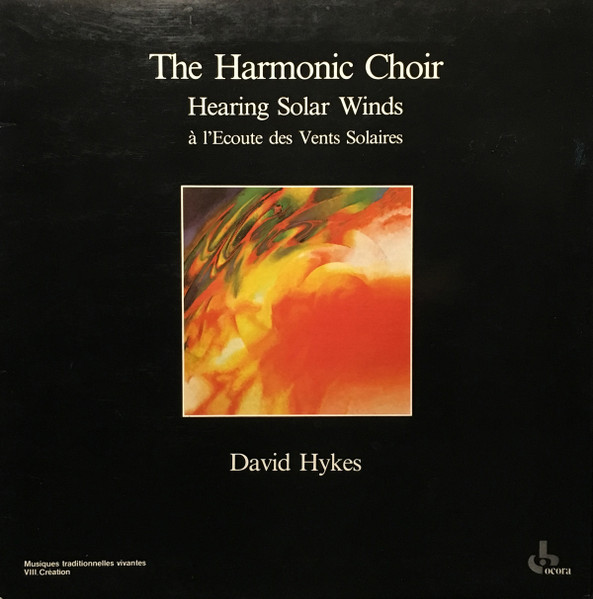
I first heard throat singing on KLF’s Chill Out, back in the mid 90s. We assumed the effect was artificial, and when we found out later that humans could actually make those sounds, I was absolutely astonished.
Although overtonal singing hails from central Asia, in the mid 1970s an American named David Hykes appropriated(!) this vocal technique and assembled his Harmonic Choir, to project over- and undertones to curious Western audiences.
Hearing Solar Winds was recorded in a French Church over several nights in 1982. It’s just voices and reverb and the occasional tinging Buddhist chime (which I find a bit unnecessary, but I don’t begrudge it).
Proceedings commence with Rainbow Voice, in which said voice emerges gradually from silence, producing, well, a spectrum of harmonics. (It reminds me of the numerous hours I spent as a late teen low-pass filter sweeping a squarewave bass drone, and enjoying the hearing harmonics wink in and out of existence.) This super bare arrangement - voice, harmonics, reverberation is a great platform on which to kick off the album.
“Multiplying Voices At the Heart of the Body of Sound” (not an early Tangerine Dream track title, but indistinguishable from one), as the title suggests, introduces multiple voices, singing the same tone but slightly detuned to create beats. The vocal control on display is impressive, while the detuning effect adds undercuts the tweeness with a bit of dissonance. Eventually the voices resolve into a major chords, but rather than be sappy, it manages to feel “right”.
Arc Descents features voices slowly descending, falling out of and into tune gracefully. Spacey. The strangely modernly-titled Gravity Waves is a 2001ish soundscape of gradually evolving harmonies. The longest track is Telescoping, where the voices ranging through one another in a slowly changing, hypnotic way.
On Ascending and Descending the voices range up and down in a way similar to the opener Rainbow Voice. It’s slightly reminiscent of the Popul Vuh track that opens Herzog’s Nosferatu. Then the sound fades away.
What makes this album so good? I think part of the key is that it’s powered solely by the human voice, which makes it timeless. The voices are suspended in space too, and the church’s reverb is suggestive of eternity. Hearing Solar Winds is a great showcase for Hykes’ vision and the Harmonic Choir’s skill. Also, the album has helped me to slumber on many a night, so thanks, team!
Steve Hillage - Rainbow Dome Musick (1979)
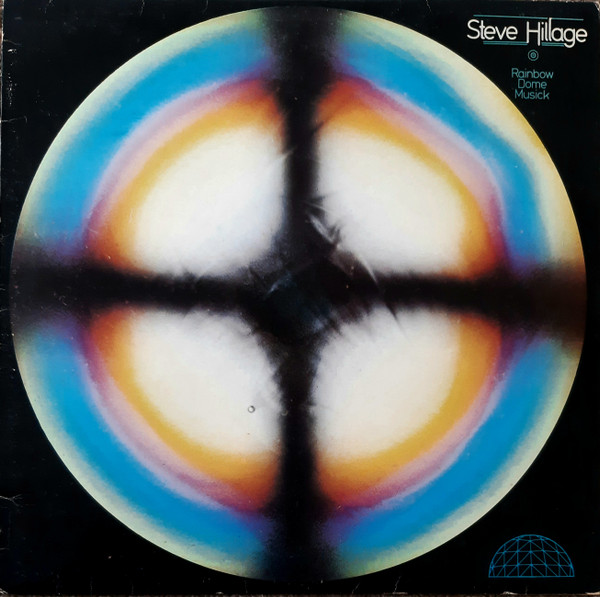
Steve Hillage and wife/partner Miquette Giraudy were previously in the prog-hippie band Gong, where the pair provided some of the group’s more contemplative electronic moments (ie tracks where no one banged on about bloody pothead pixies).
Rainbow Dome Musick was “Recorded for the Rainbow Dome at the Festival for Mind-Body-Spirit Olympia London April 21-29. 1979.”, which confirm’s the album’s New Age pedigree. Proceedings commence with the sound of water trickling into a pool, which, on playing back just now, encouraged my wife to use the bathroom. Over this noise electric piano and synth flutter gently. Gradually a spiraling sequencer comes in to play. Hillage’s guitar then holds forth.
Side 2, “Four Ever Rainbow”, starts with a bell ting and some raspy bass monosynth harmonic twiddling. There’s then a parade of catlike sinewaves and a plinky heavy delayed synth. It sounds a lot like the Orb, and this is no coincidence: Rainbow Dome Musick was a disc spun by the Orb’s LX Paterson and the KLF’s Jimmy Cauty when they (re)discovered ambient in the late 80s. Later Hillage and Giraudy performed on the wonderful Orb track Blue Room.
Iasos - Inter-dimensional music (1975)

Iasos is an American-Greek New Ager, and though this album was recorded in the mid 1970s it feels much later than that, perhaps because it was an influence on what came after? The music is clear and peaceful without being cloying, and there’s a fresh, bright openness to the sound. The arrangement is reasonably jazzy, with flute, guitar, and piano, garnished with synth washes and plenty of space in the arrangements. It’s a musical document that while utterly New Age doesn’t feel doctrinaire about it. To me the standout track is Rainbow Canyon, which has a Gongish, Krautrocky vibe. Lots of shimmering slide or pedal-steel guitar.
Ashra - Blackouts (1977)
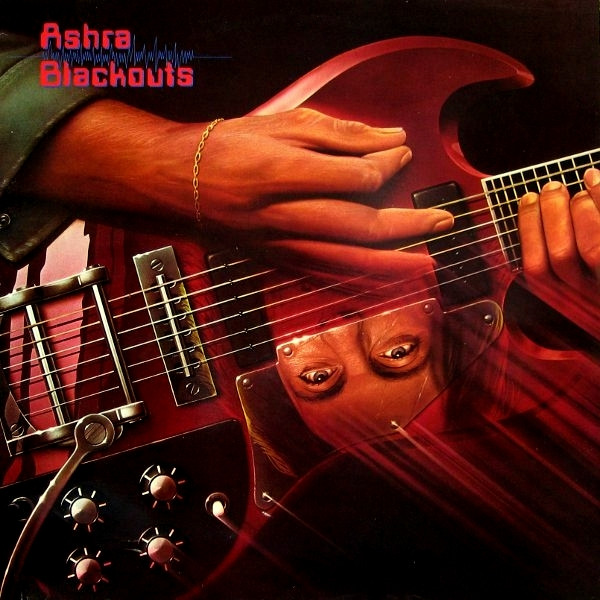
Ashra was a solo project of German guitarist Manuel Gottsching, he of mighty Krautrock unit Ash Ra Tempel. The title of the first Ashra album, New Age of Earth (1976), gives a clear indication of Gottsching’s intentions, but the followup album Blackouts is the one I wish to include here.
The first track, “77 Slightly Delayed”, is a genial piece, synth-propelled and with interest maintained by Garcia-esque guitar. Track 2, Midnight on Mars, is a gentle space jazz outing. Don’t Trust The Kids, sounds more like Air than anything else!? Following on, the titular Blackouts, erupts in a blaze of guitar. Shuttlecock is a geometric spiral of multiple guitars and afro rhythms. Concluding the album is the more straightforwardly New Agey Lotus Part I - IV, which shuffles around reasonably cheerfully, although some dissonance is allowed in at one point.
New Age of Earth is more straightforwardly New Age than Blackouts, but because of that it’s less interesting. Is Blackouts New Age enough? Well, if you compare it to the primordial fire of Ash Ra Tempel’s first album, it is, yes. If you compare it to something Hearts of Spacey, maybe not so much. Interestingly, the Ashra album following Blackouts, Correlations (1979), was a more rock(!) affair, so it’s almost like over the course of three albums Gottsching recanted his New Age swerve.
Tony Scott - Music for Zen Meditation and Other Joys (1964)
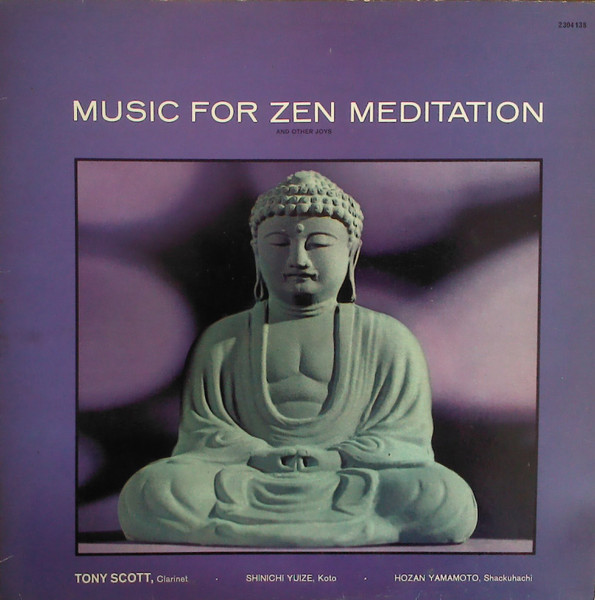
Tony Scott was primarily a jazz clarinetist, but was interested in Japanese music, and produced an album considered to be the first of the New Age.
The arrangement is very minimal: Scott with his clarinet, plus koto and shakuhachi. At first the music is standard minor key folk Japanese, but Scott’s clarinet puts enough bend into the notes that you realise you’re listening to something intentionally other. Scott has the audacity to believe he has something to add, and he goes right ahead and does it. The chief joy for me in this is that because he was a pioneer (well, aside from all other appropriations from outside the western canon, over hundreds of years…), his performance is unselfconscious. He’s playing his way - but sensitively - and it just works.
My only criticism of Music for Zen Meditation - and a more general criticism of this mode of Japanese folk music - is that the minimal arrangement, the meditative mood, and the traditional scale used make for a very limited style. I know that that’s kind of the point - to transport the listener’s mind to the same Zen place, every Zen time. Even so, I think this limitation is still worth pointing out. If you like, Music for Zen Meditation is the Alpha and Omega for this sort of thing.
Michael Stearns - Planetary Unfolding (1981)
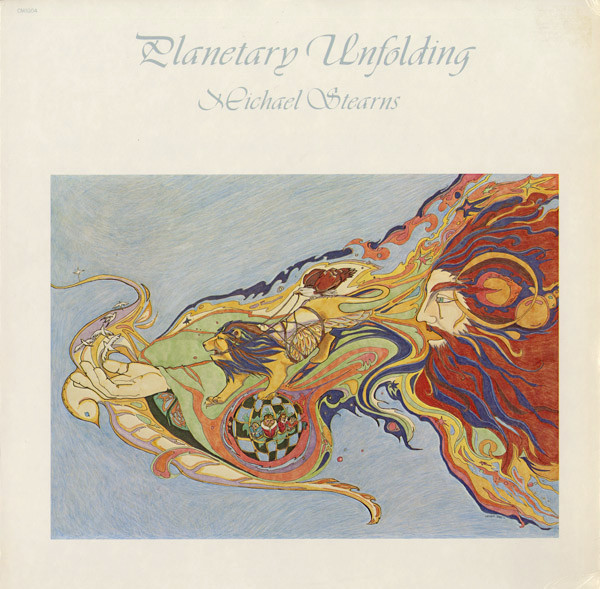
Michael Stearns’ biggest claim to fame is that he scored the early 90s “non-narrative” (their term) documentary film Baraka. His career began a long way before that, however, and Planetary Unfolding is a remarkable document from the early 80s. The first track, “In the Beginning”, unfurls inexorably from a quiet bass drone into a transcendent crescendo that I would have to say is the transcendiest and cresciendiest that I’ve ever heard.
The rest of the album proceeds with much the same majesty. The only duff track is Life in the Gravity Well, but even then because it contains a wailing chanteuse part that isn’t to my taste. (Now I’m not against wailing in itself: there’s a similar example in the KLF’s Chill Out, and I am completely in awe of Ofra Haza. No, it’s the particular style of this wailing: it’s a baldly New Age, swims-with-dolphins-and-gives-birth-underwater kind of a wail, and I don’t think the album needs it.)
The final track, Something’s Moving, starts with a tickyticky sound that is quite odd for a concluding track, but it music eventually resolves with a wonderful sense of completion.
On the face of it there’s not much about Plantary Unfolding that is definitively New Age (well, aside from the afore-mentioned wailing); it could be considered space rock, or ambient. For me the New Ageyness is in the unashamed embrace of grandeur and transcendence. It’s not something Eno would find tasteful, despite being dangerously close to New Age at times himself; early 70’s Tangerine Dream embraced grandeur but made it seem cold and alien. Another element crucial to the album’s success is the use of early 80s analog-synthesis-in-its-prime synths, rather than mid 80s digital synthesisers, which would have given the album a more brittle sound (see Constance Demby!).
I’ve already mentioned a similarity to the KLF’s Chill Out. This could be put down to the synthetic arrangements, but I suspect that somewhere deep down there is a kindred spirit between Rockman, King Boy, and New Age practitioners like Stearns. (Come to think of it, I’ve just remembered the KLF’s New Agey obsession with Ley Lines. And Jimmy Cauty did those posters for Lord of the Rings. More worryingly, if there’s a bit of New Age even in pop’s most piss-taking pranksters, then no one’s safe.)
Enya - Watermark (1988)

Despite my disgust at Constance Demby (poor old Constance, RIP), 15 year old me did very much enjoy the fiddle-dee-dee Celtic stylings of Enya (and for that matter, her family’s work on the Robin of Sherwood soundtrack a few years earlier). Genre check: is Enya actually New Age, or merely Irish? Surely Irish music can’t be entirely synonymous with New Age, but the holdouts would be who? The Pogues, definitely, and Dexy’s. Foster and Allan, fo’ shizzle. U2? Ah, well, not really, hmmm. Ignoring that question, I’m confident that many babies have been birthed to Enya’s soothing multitracked warbles, so I’m going to say that yes, she is New Age.
Is Watermark actually good? Yeah, I reckon. Why not? Can I declare here and now my love for Orinoco Flow? Oh, go on then.
James Holden - The Animal Spirits (2017)
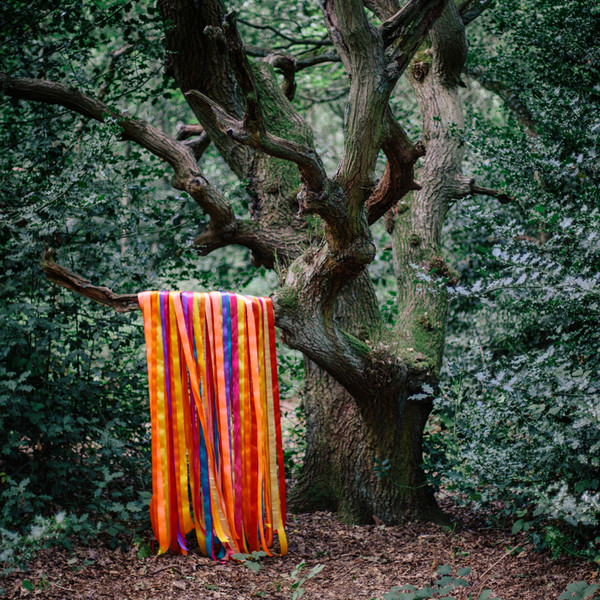
James Holden is an English DJ with a sideline producing wonky electronica using modular synthesisers. For The Animal Spirits Holden assembled a jazzish band. The Animal Spirits was recorded with a band. The result sometimes sounds a bit like Terry Riley, and sometimes it recalls a 1970s psychedelia-infused tribal jazz. The result is really great.
Without knowing more about motivations of Holden and his cadre, I can’t say if The Animal Spirits was consciously intended to be New Age, but I detect in the music a strong sense of English paganism. It’s not necessarily a paganism from the past; it could equally be a paganism of a post-civilisation come-down. Even if the intent and effect is of a different kind to crystals’n’chakras New Age, it still feels like there’s something New Agey in there. It’s not just me, right?
Popul Vuh - Hosianna Mantra (1972)

After two albums of Moog doodlings (one average, one pretty good), Popul Vuh’s leader Florian Fricke decided to ditch the electronics and form a band. The concept for Hosianna Mantra was to fuse Eastern and Western religious musical styles. That sounds like a recipe for prog bombast, but it was the early 70s and Fricke was German, so the result was always going to be more a bit unexpected.
The key to the album’s success is the earnest simplicity of the music. Fricke’s band had an eclectic and eccentric arrangement (piano, oboe, guitar, sitar, and - most crucially - the classically-trained voice of singer Djong Yun). The music is utterly earnest (I can’t imagine Can or Faust ever meaning it like Popul Vuh did) and pehaps feels rather naive to modern ears, but I can’t help but admire it as being wholly singular and, well, highly irregular.
Conclusions
So I think I can bring myself to say that New Age is not all bad. I suppose the lesson is that if you’re creative enough you can transcend the cliches of any genre. Should I have known that already? Probably, yes. Next style to tackle? Evangelical Christian music? Oh I’d be fascinated to hear something actually good and non happy clappy in that style. But not interested enough to seek it out…